Clay and color: Ancient painted pottery exhibition at SZ Museum
Writer: Cao Zhen | Editor: Yu Xiyao | From: Original | Updated: 2025-09-29
Shenzhen Museum has opened a new exhibition at its ancient art division, “Starry Splendor on Clay,” devoted to painted pottery.
The 100 works, drawn from the museum’s own collection, elaborate the craft of painted pottery, its evolving designs and decorations, and its cultural significance. Many pieces are being shown to the public for the first time.
The exhibition brings together recent archaeological research and highlights key Neolithic cultures, including Yangshao, Majiayao, Zongri, Kayue, Xindian, and the regionally distinctive Xiantouling culture of Shenzhen.
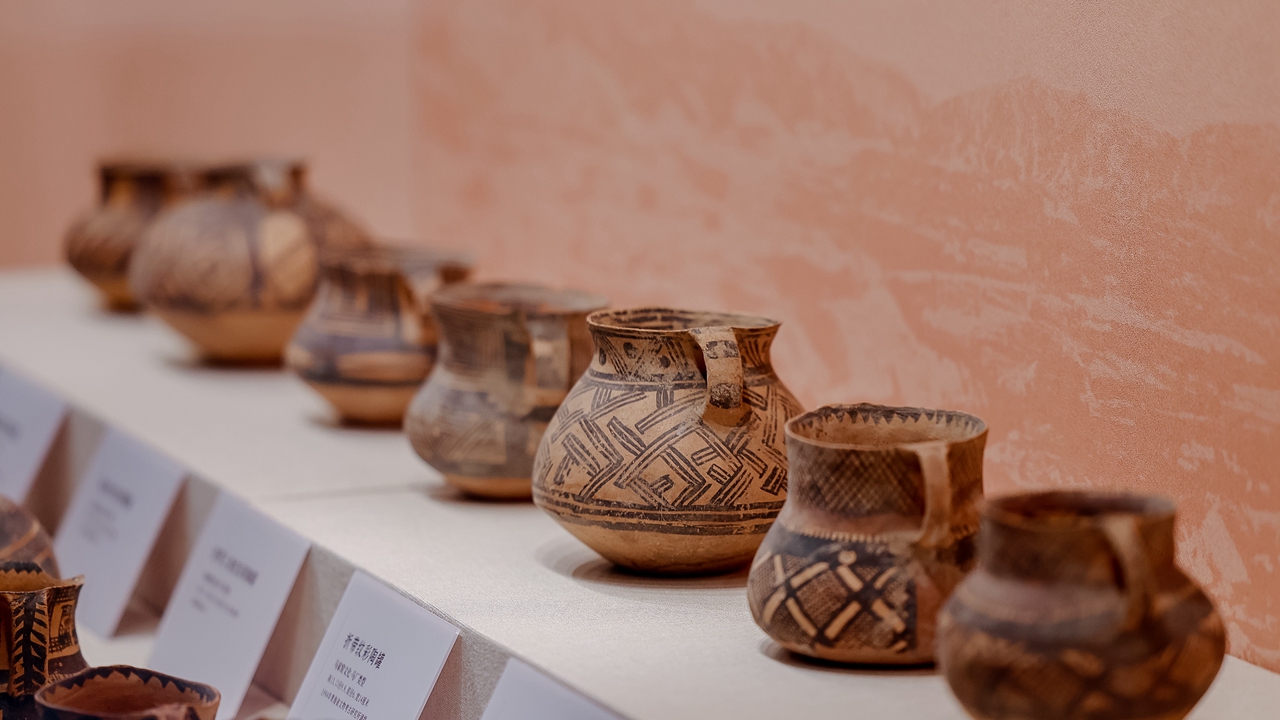
Ancient painted pottery on display at the exhibition. Photos courtesy of the organizers
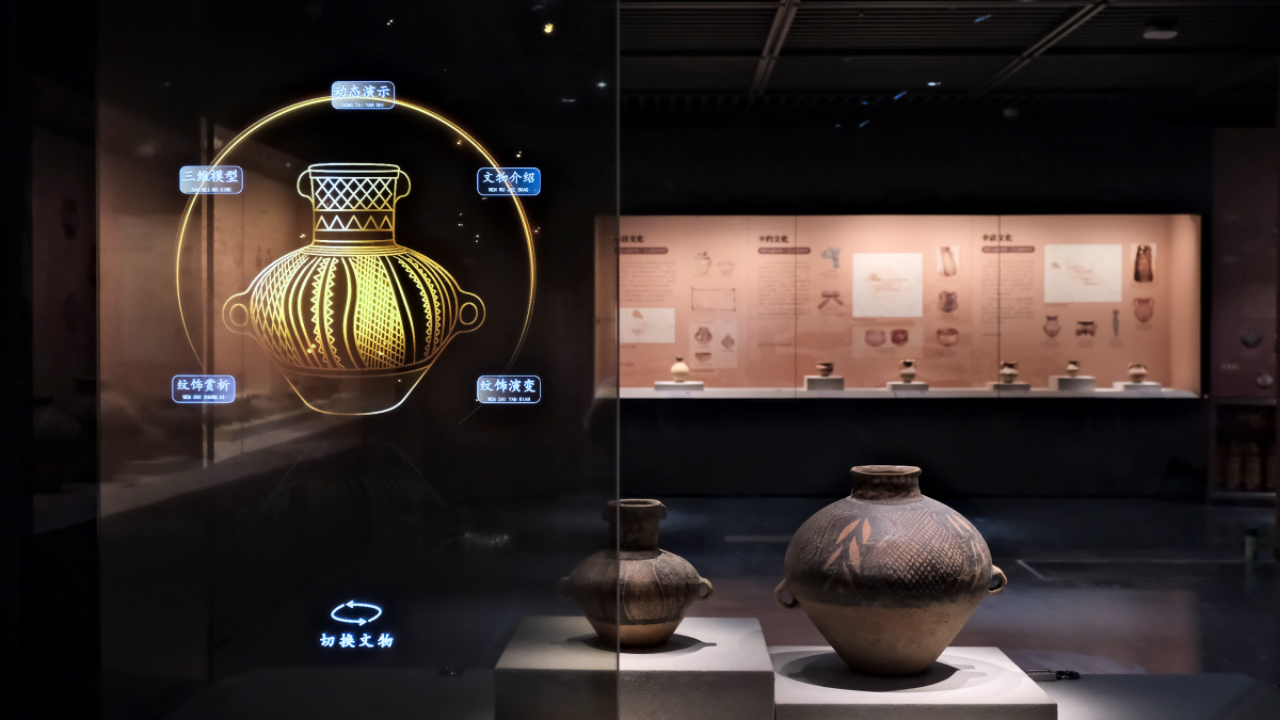
An interactive screen provides information about the pottery.
Visitors can view painted pottery that blends realistic and abstract ornament to reflect nature, daily life, and belief. These wares combine practicality and artistry and represent some of the earliest crafts to integrate painted decoration with shaped form.
For example, a Yangshao fish-pattern jar features lively outlines that embody fishing and hunting wishes as well as totemic reverence. A Majiayao pot decorated with four circles filled with branching leaf-and-net motifs reflects ancestors’ careful observation of their natural environment.
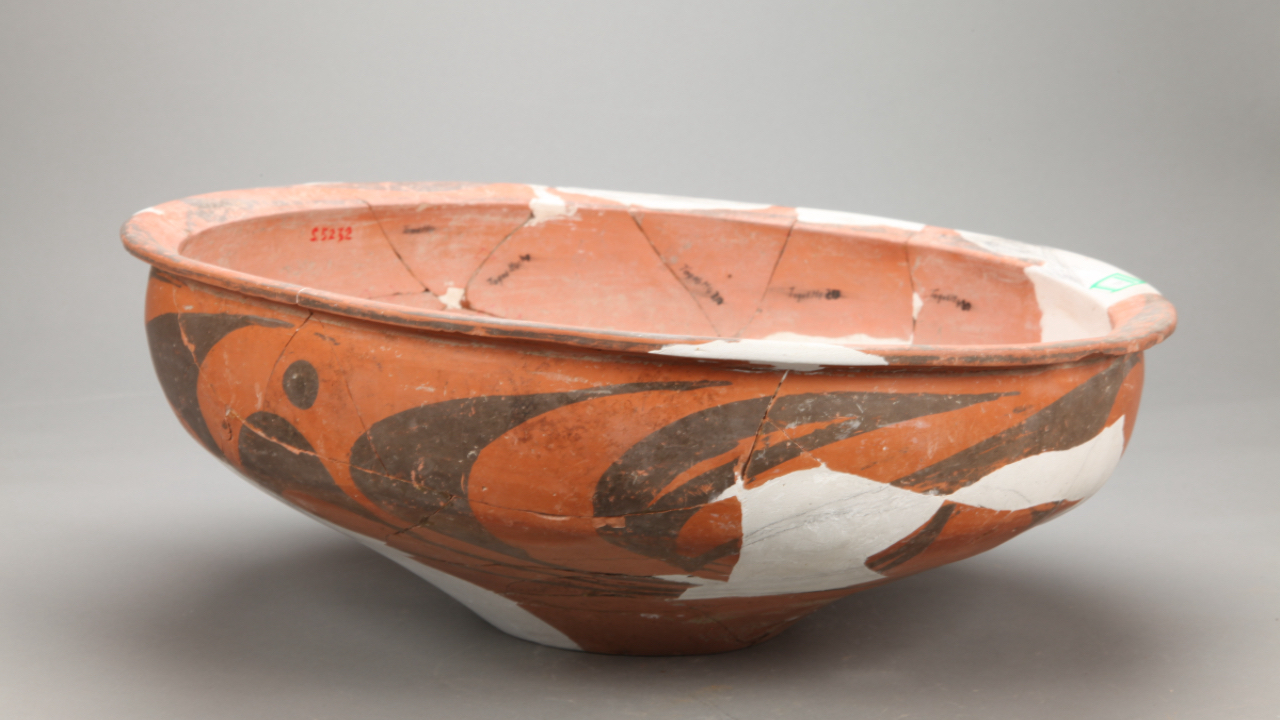
A painted pottery vessel from the Yangshao culture.
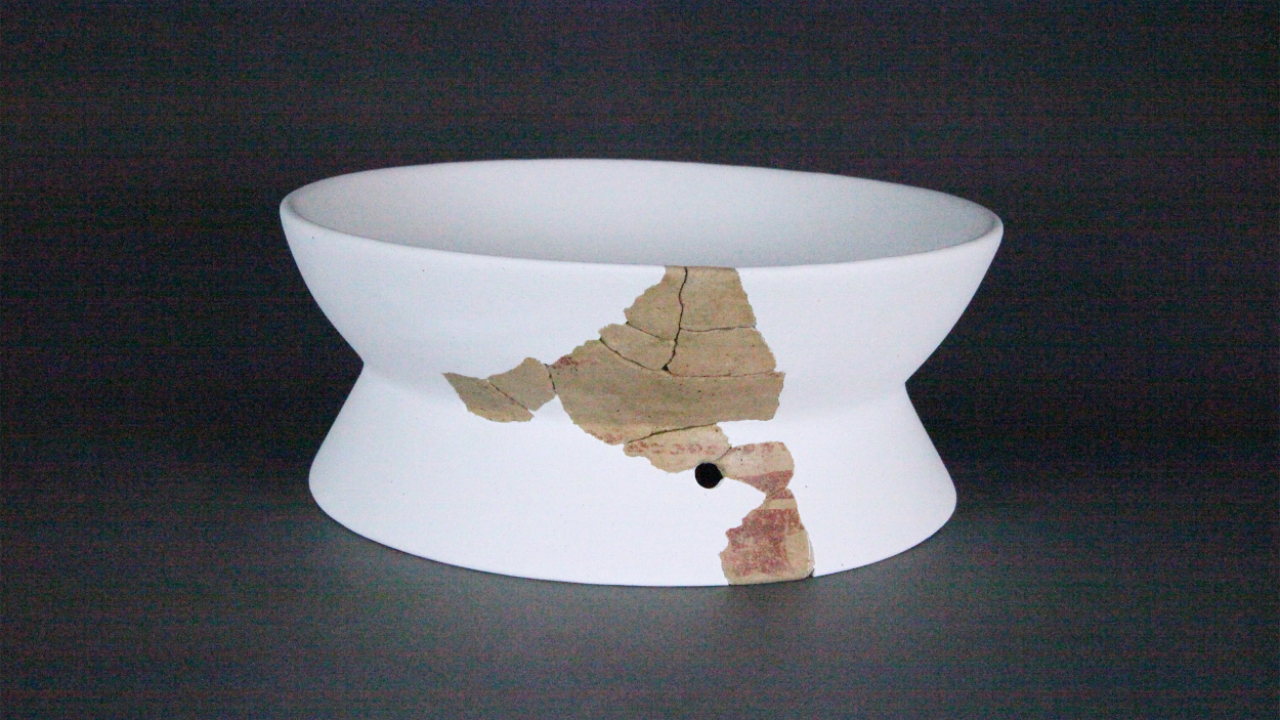
A painted pottery vessel from the Xiantouling culture.
Together, these wares reveal a profound connection between ancient peoples and their surroundings. The exhibition presents a vivid panorama of thriving prehistoric craftsmanship and cultural life from several millennia ago, allowing visitors to appreciate the ingenuity, creativity, aesthetics, and spiritual pursuits of early communities.
Notably, the Xiantouling painted pottery on display provides tangible evidence of human activities in Shenzhen dating back about 7,000 years, underlining the deep local roots of regional civilization.
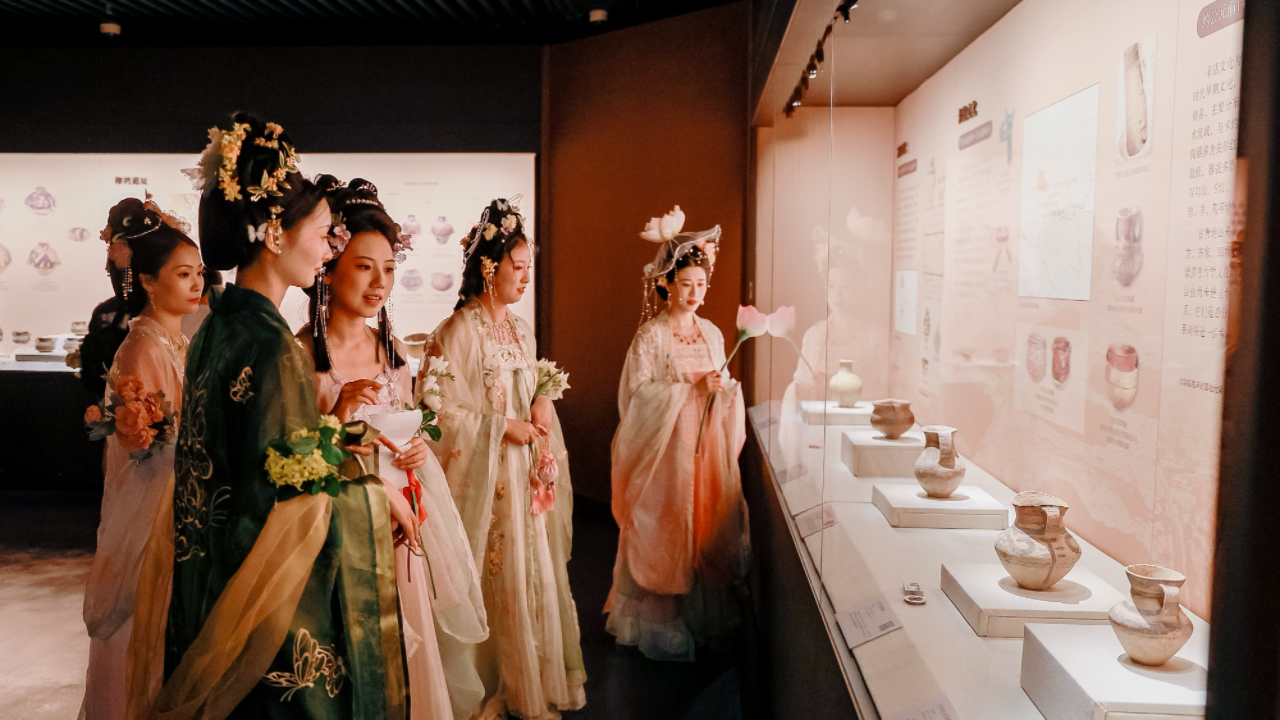
Visitors in traditional Chinese attire admire the exhibits.
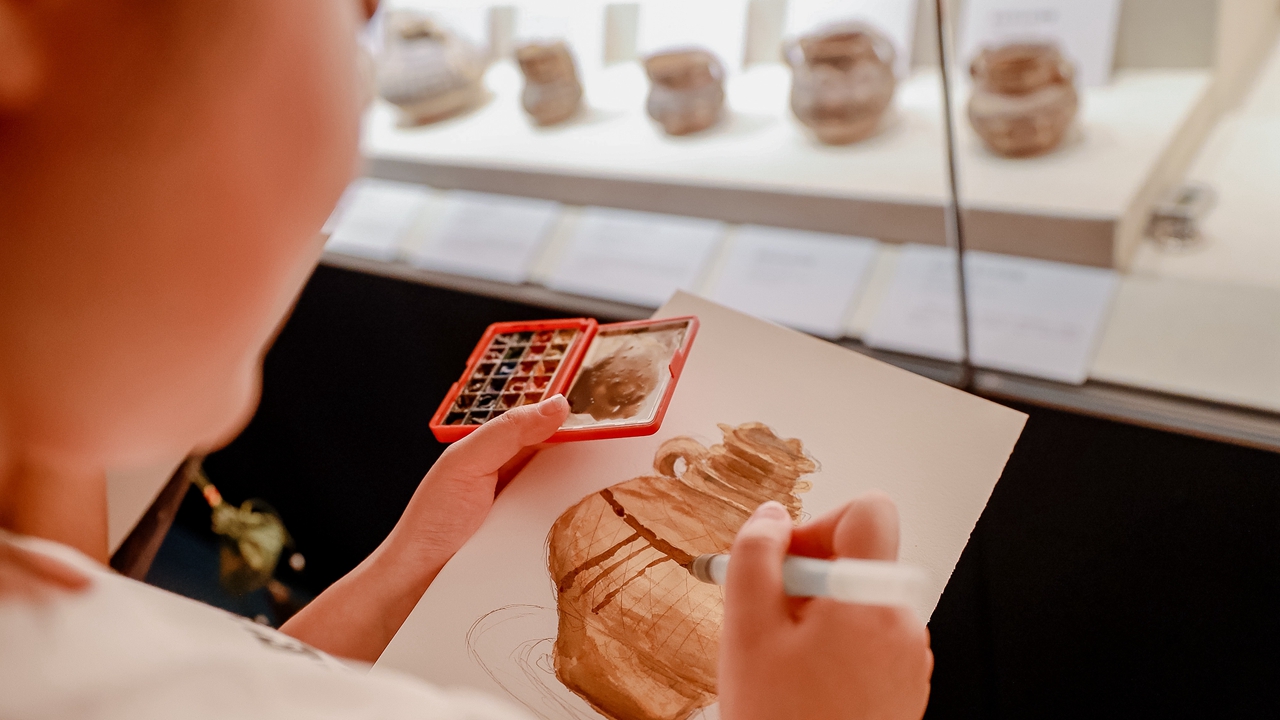
A visitor paints a pottery-themed artwork at the exhibition.
To enhance public engagement, the exhibition incorporates interactive technologies —gesture-based controls and motion-sensing floor installations — to create a more immersive experience. A program of public-education activities will accompany the permanent exhibition, including painted-pottery workshops, school outreach, ceramic-decoration sessions, and drama-education classes.
Hours: 10 a.m.-6 p.m., closed Mondays
Venue: Shenzhen Museum’s ancient art division, Tongxin Road, Futian District (深圳博物馆同心路馆-古代艺术)
Metro: Line 9 to Hongling South Station (红岭南站), Exit A
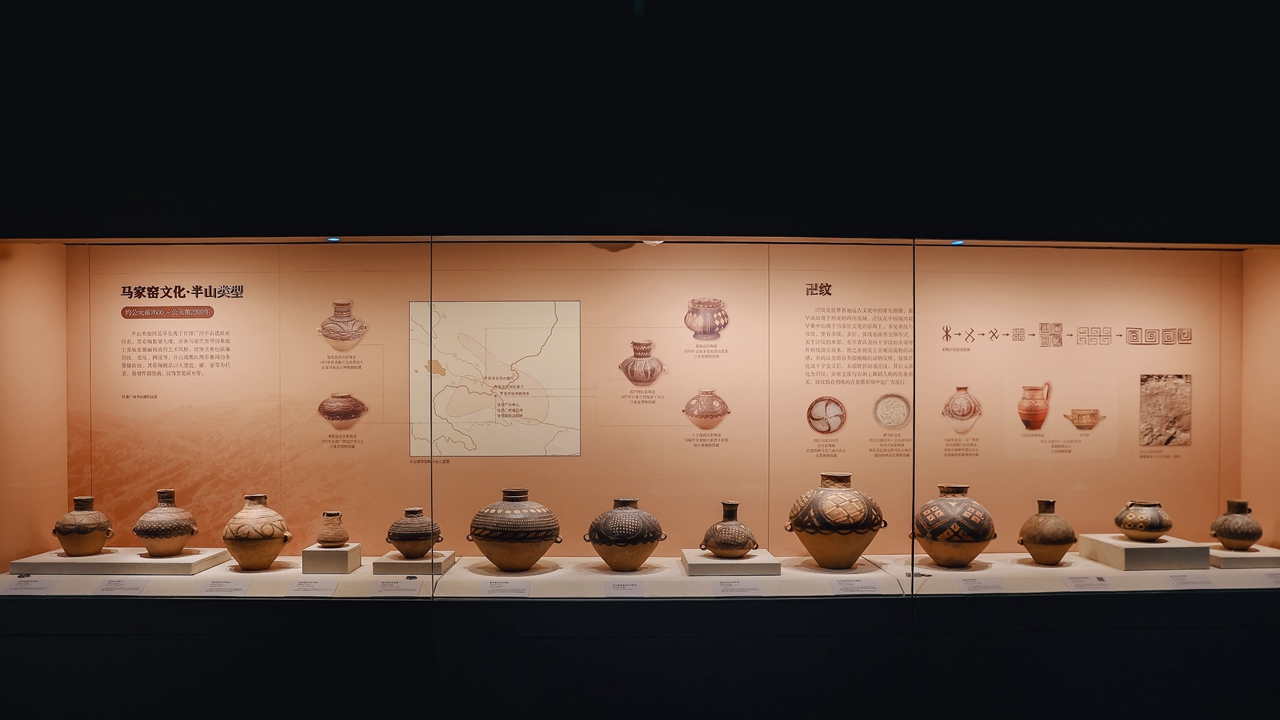
At the exhibition, informational displays accompany the exhibits, offering insights into pottery.